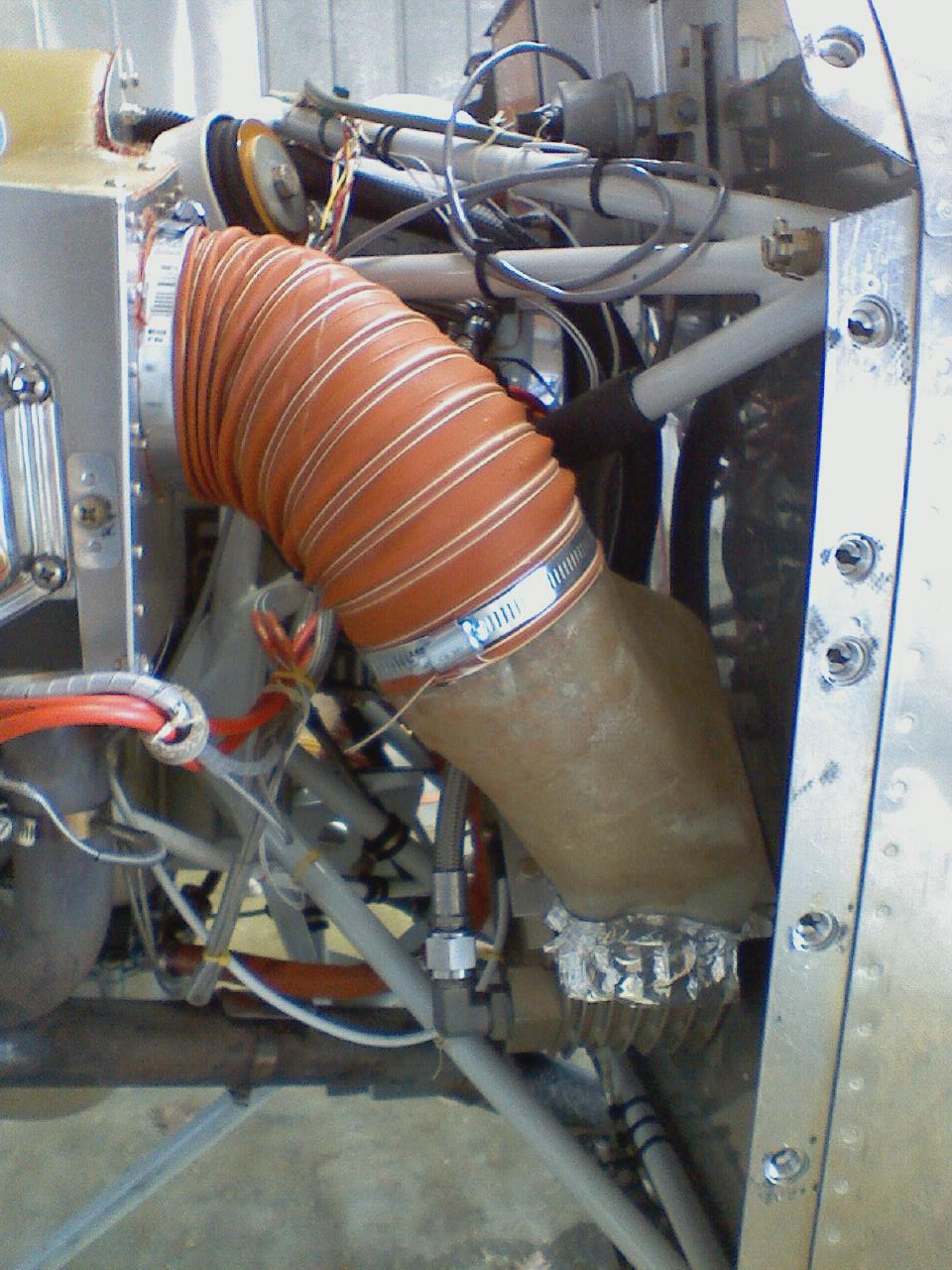I have an RV7 with a parallel valve O-360 and the stock Niagara 7 row cooler on the baffle behind #4. Currently my oil temps are decent 180-190 in cooler weather and 215 max on hot climb-out in the summer.
I'm thinking of remote mounting my cooler on the engine mount tubes on the left side, I didn't plan for this and my firewall is probably out due to other items already mounted.
-I'm thinking I should make more of a structural bracket that clamps to the engine mount with adell clamps to hold the oil cooler so the body of the cooler doesn't have any bending forces on it.
Searching the archives it seems like most people use a 3 inch hole and scat tubing for the smaller 7 row coolers and 4 inch for the larger coolers from the baffling. There needs to be a nice smooth transition from the scat tube to the cooler face.
-I'm thinking I could make my own inlet from the baffling in just about any shape (more options on where to pull the air from) as long as the opening has a bell-mouth directing the air in and then a nicely shaped duct to the cooler face? -I'm guessing I should also be shooting for about 7 inches of area, the same as a 3 inch circle?
I would also like to make an exit duct directing the air from the cooler to the cowling exit.
-Am I shooting for about 7 degrees of divergence on the exit duct?
-How large should the exit be?
I'm thinking of remote mounting my cooler on the engine mount tubes on the left side, I didn't plan for this and my firewall is probably out due to other items already mounted.
-I'm thinking I should make more of a structural bracket that clamps to the engine mount with adell clamps to hold the oil cooler so the body of the cooler doesn't have any bending forces on it.
Searching the archives it seems like most people use a 3 inch hole and scat tubing for the smaller 7 row coolers and 4 inch for the larger coolers from the baffling. There needs to be a nice smooth transition from the scat tube to the cooler face.
-I'm thinking I could make my own inlet from the baffling in just about any shape (more options on where to pull the air from) as long as the opening has a bell-mouth directing the air in and then a nicely shaped duct to the cooler face? -I'm guessing I should also be shooting for about 7 inches of area, the same as a 3 inch circle?
I would also like to make an exit duct directing the air from the cooler to the cowling exit.
-Am I shooting for about 7 degrees of divergence on the exit duct?
-How large should the exit be?





